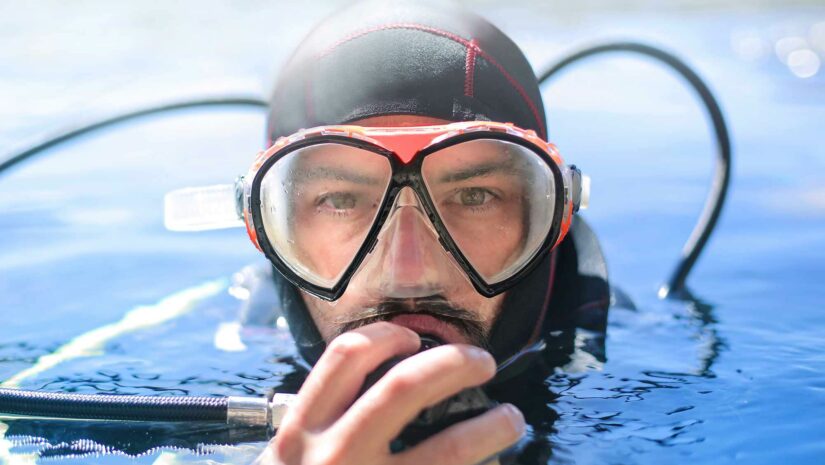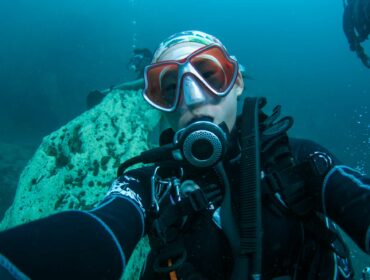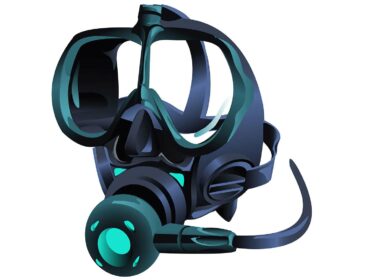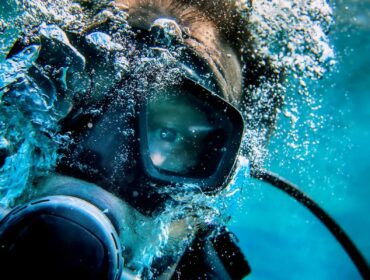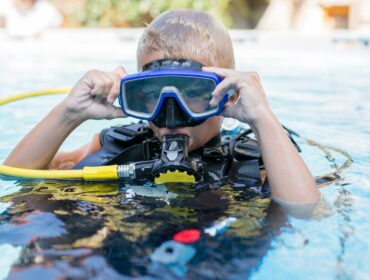Scuba diving can present several life-threatening risks, which is why training under a certification agency is required before one can go swimming at great depths. You’re probably already aware of those risks, including misuse of gear, strangulation by fishing lines and nets, decompression sickness, arterial air embolism, nitrogen narcosis, and of course, drowning. What many don’t realize is that your very own scuba diving mask can cause you some serious harm if you’re not aware of a condition called facial barotrauma—also known as “mask squeeze.”
What is Mask Squeeze?
Mask squeeze (or face squeeze) occurs when incorrect equalization of the air pressure inside the mask causes it to compress tighter against the face, causing the small blood vessels around the eyes to burst. In case you don’t know how this feels, it’s like the covered areas of your face literally get sucked into the mask as the negative space between them gets small.
While divers are usually warned about it during Open Water Diver courses, many don’t pay too much attention to it after underestimating the trauma that it can cause. So unless you’re willing to surface with scary, bloodshot eyes, you’ll want to remember what not to do and what you can do to prevent it from happening during any your dives.
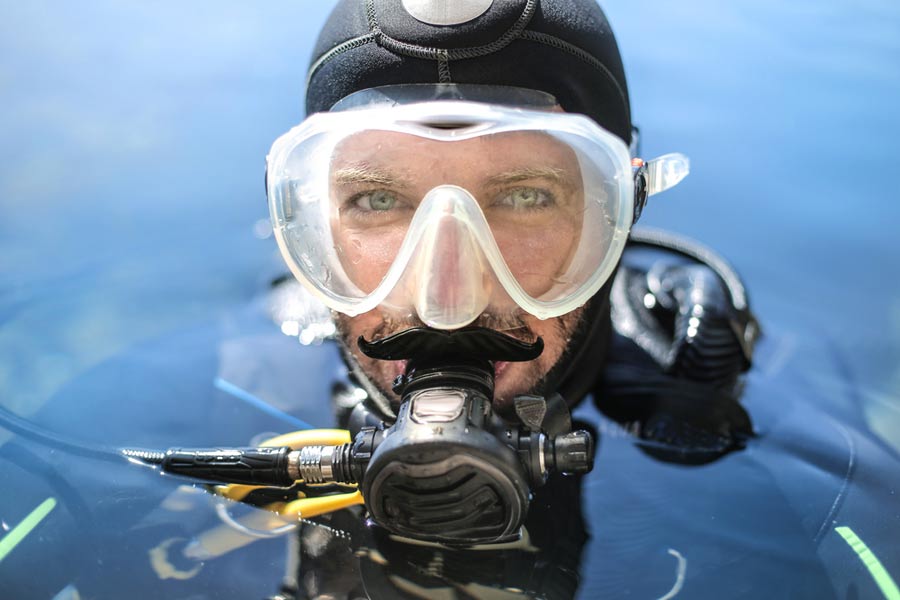
How Does Mask Squeeze Happen?
The unfavorable change of mask pressure can be caused by a number of things. The most common is failing to exhale into the mask during descent. Many divers remember to equalize their ears since ear discomfort becomes increasingly noticeable as you dive deeper, but they may not realize the increase in scuba mask pressure until after they surface.
Other factors that increase the likelihood of mask squeeze from diving is poor dive mask fitting (particularly if you choose a mask that’s too small for your face or too tight) and fast descent. Your mask should fit flush against your face and you should be able to achieve a proper seal by simply inhaling through your nose, without the strap over your head. If your mask does not seal against your face when you do so, then it does not fit your face properly, and you will need to choose something else.
As you can imagine, it can be easy for a diver to forget the necessary steps to take in order to prevent mask squeeze, especially for scuba diving beginners who are worried about getting air into the mask.
In relation to that, mask squeeze can often happen as a result of trying to ensure your mask doesn’t leak. A bit of leakage is common and does not necessarily mean that your mask does not fit properly; most everyone experiences leakage at some point in their dive history. Be sure not to push the mask into your face to try to make a better seal before you go on the dive. If your mask leaks a little on a dive, simply exhale through your nose, tilt your face upwards, and press the top of the frame toward your forehead to crack your mask seal slightly.
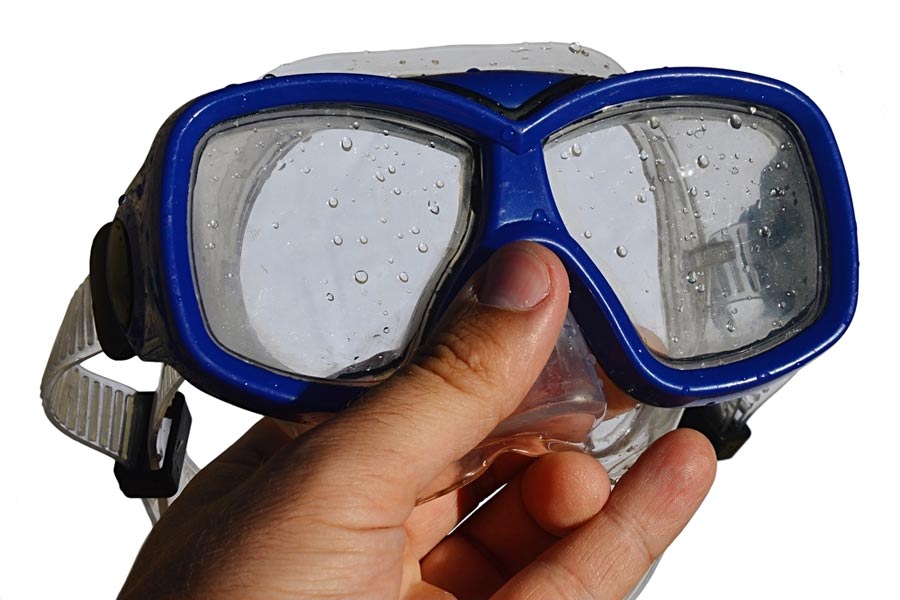
Dangerous Effects of Mask Squeeze
Divers who suffer from mask squeeze may notice bruising around the eyes, blood spots over the white areas of their eyes, and/or swelling. Fortunately, it rarely causes injury inside the eyeball. Divers often get very alarmed and panicky when they see blood in their eyes, but the condition isn’t as serious as it looks and usually clears away without any major mask squeeze treatment.
In the most severe cases, the hemorrhage can last longer or you might notice a loss of vision or pain, in which case you should visit a doctor straight away.
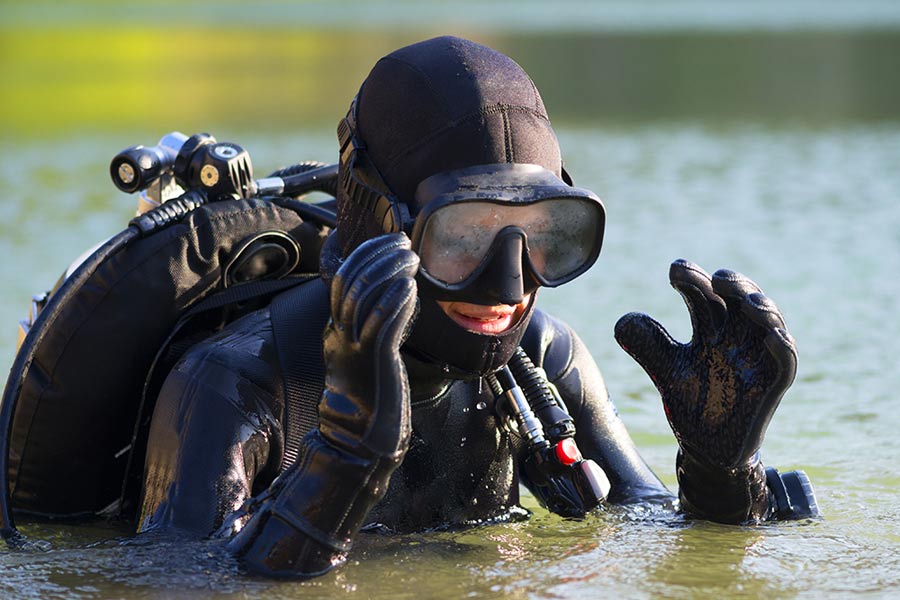
Avoiding Scuba Diving Mask Squeeze
Prevention is always better than cure, which is why every diver needs to remember how to use their masks properly and avoid mask squeeze.
First, never wear masks that cover only the eyes. While those may be suitable for snorkeling, you’ll need a mask that can be equalized if you’re going to be swimming at greater depths. Fortunately, modern dive masks have nose valves that allow divers to easily equalize the air space between their mask and face without the risk of flooding it with water.
Next, don’t choose a mask that feels tight to begin with. Once you descend, the pressure automatically causes an increased suction on the mask. A scuba mask should sit comfortably on the diver’s face and stick when mild pressure is applied even without the strap being worn.
To help prevent bruising, a soft silicone skirting is also a must, so the mask will comfortably cushion and spread the pressure around your face.
Finally, don’t descend too fast and make it a habit to equalize. Instead of being worried about water getting into your mask, it helps to get comfortable with taking off and putting on your dive mask underwater. It is easy to equalize the pressure right from the beginning by just breathing out of your nose during a descent. This small amount of air pumped into your mask can make the difference between a comfortable, enjoyable dive and a less comfortable one!
Through practice and with presence of mind, you can easily avoid mask squeeze and enjoy much safer dives.

